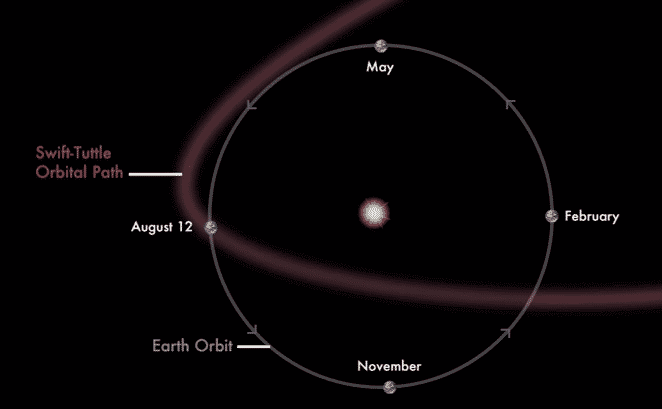

The Perseid Meteor Shower, nature’s late-summer shooting star spectacle, peaks Aug. 12 – 13 as the Earth travels through the remnants of comet Switft-Tuttle this year with skies darkened by a new moon, with the unfortunate threat of thunderstorms, but strategic observers can still get a good show with some shrewd scheduling.
Interested meteor watchers should focus their viewing between midnight and dawn, and get as far away from city and town lights as possible. The Frosty Drew Observatory in Charlestown (the best spot in the state for stargazing with the least light pollution within the borders) will host their viewing event of the Perseids after sunset Friday Aug. 10 and through the early morning hours of Aug. 11 – bring blankets, sweaters and snacks.
As luck would have it, the day’s forecast is mostly sunny – making the event the best opportunity to see the showers as near to the peak viewing time as possible without getting rained on. That Friday, Frosty Drew opens the Observatory and Sky Theatre at 6 p.m. with their regular Stargazing Night event. In the Observatory, telescopes will showcase the our star, the Sun, treating visitors to views of sunspots and solar prominences as well as the Sun’s turbulent chromosphere.
There’s a second Frosty Drew Perseids Viewing Night scheduled for Saturday night, though there is some rain forecast for that day, so watch the weather and plan accordingly.
What are the Perseids?
The Perseids and the spectacular meteor shower show they’re known for are created by the debris field from Comet Swift Tuttle, which the Earth passes though every August. Pieces from the comet, meteors, strike the Earth’s atmosphere at 132,000 mph, burning up and creating the fireball effect, according to NASA.gov.
(Meteorites are meteors that survive their firey encounter with the atmosphere and strike the Earth.)
The Perseids were named so because the meteors viewed appear to be approaching from the constellation Perseus.

Where to view:
- Frosty Drew Observatory 61 Park Ln, Charlestown, RI (401) 364-9508
- Any spot far from city/town lights. The farther you get from town, the better your view will be.
When to view:
The best days for viewing fall on Aug. 11 and Aug. 12, just after midnight, but the day before still boasts a new moon darkened sky and, as of Aug. 5, no rain forecast.
Tips:
- Bring a blanket and something to prop your head up as you watch for meteors.
- Remember, state parks close at dusk, so while those areas are far from light pollution, you won’t be able to go in.
- This is a good night to let the other guy drive so you can just look up.
- If you see a very slow, bright object sailing across the sky, it’s either a satellite or a Space Station.
This is a test
